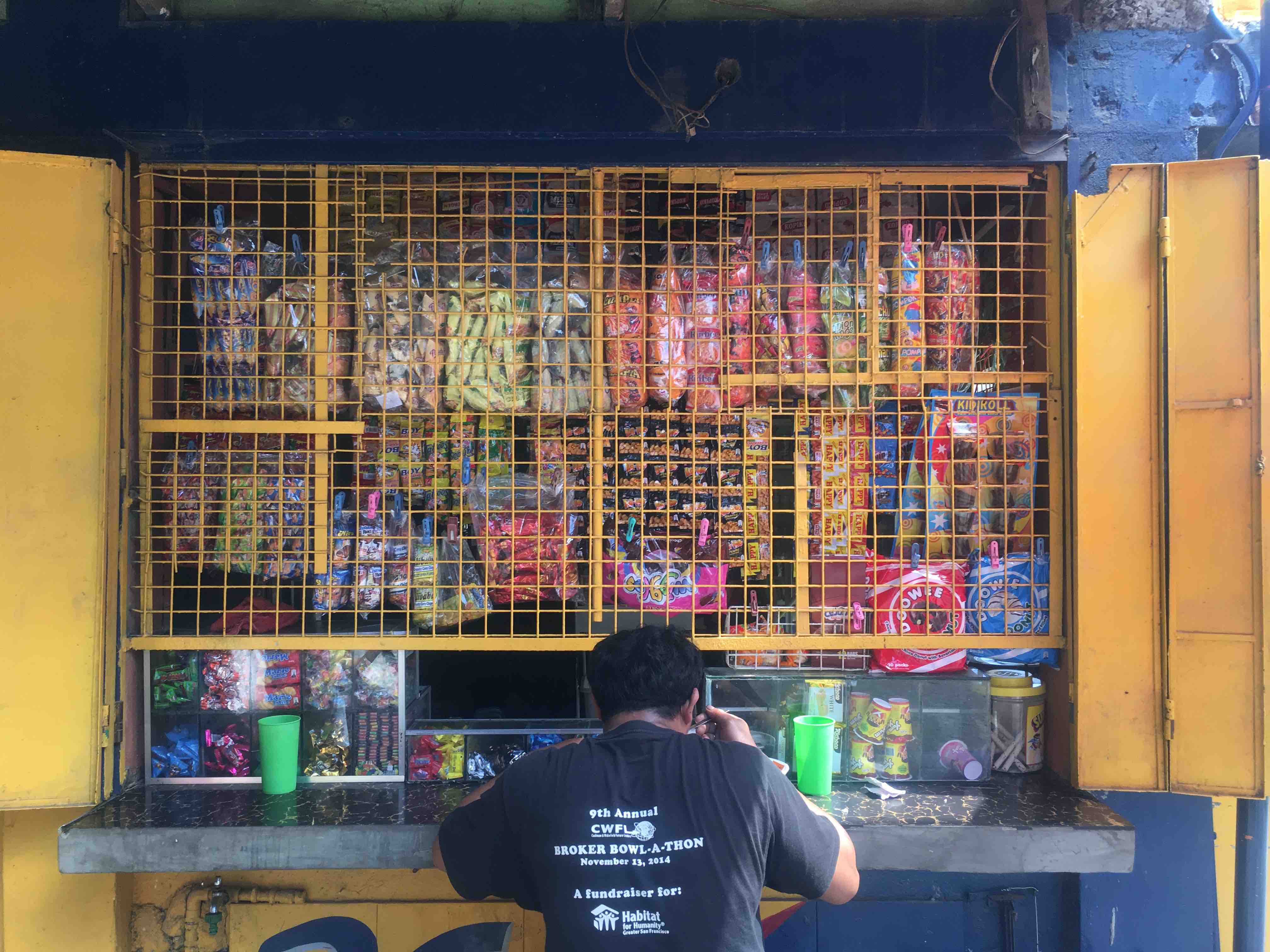Walking along Roxas Boulevard’s Baywalk, one is presented with two sides of Manila: the city that is and the city that could have been. On a recent Saturday morning, we got a taste of both.
It was 7am and the road wasn’t yet drowning in the bumper-to-bumper traffic that would fill it by afternoon. The weather was warm but windy, a treat for the joggers threading their way between Zumba dancers and sidewalk vendors.
Taking in the boats docked at the nearby Manila Yacht Club, the place looked like the lively promenade it was always meant to be.
At least if you didn’t look too closely.
Zoom out and you would have noticed that the bay was muddy brown; zoom back in for a closer look and you’d notice not fish, but voluminous plastic waste. This is the reality of life in Manila for more than 12 million residents.
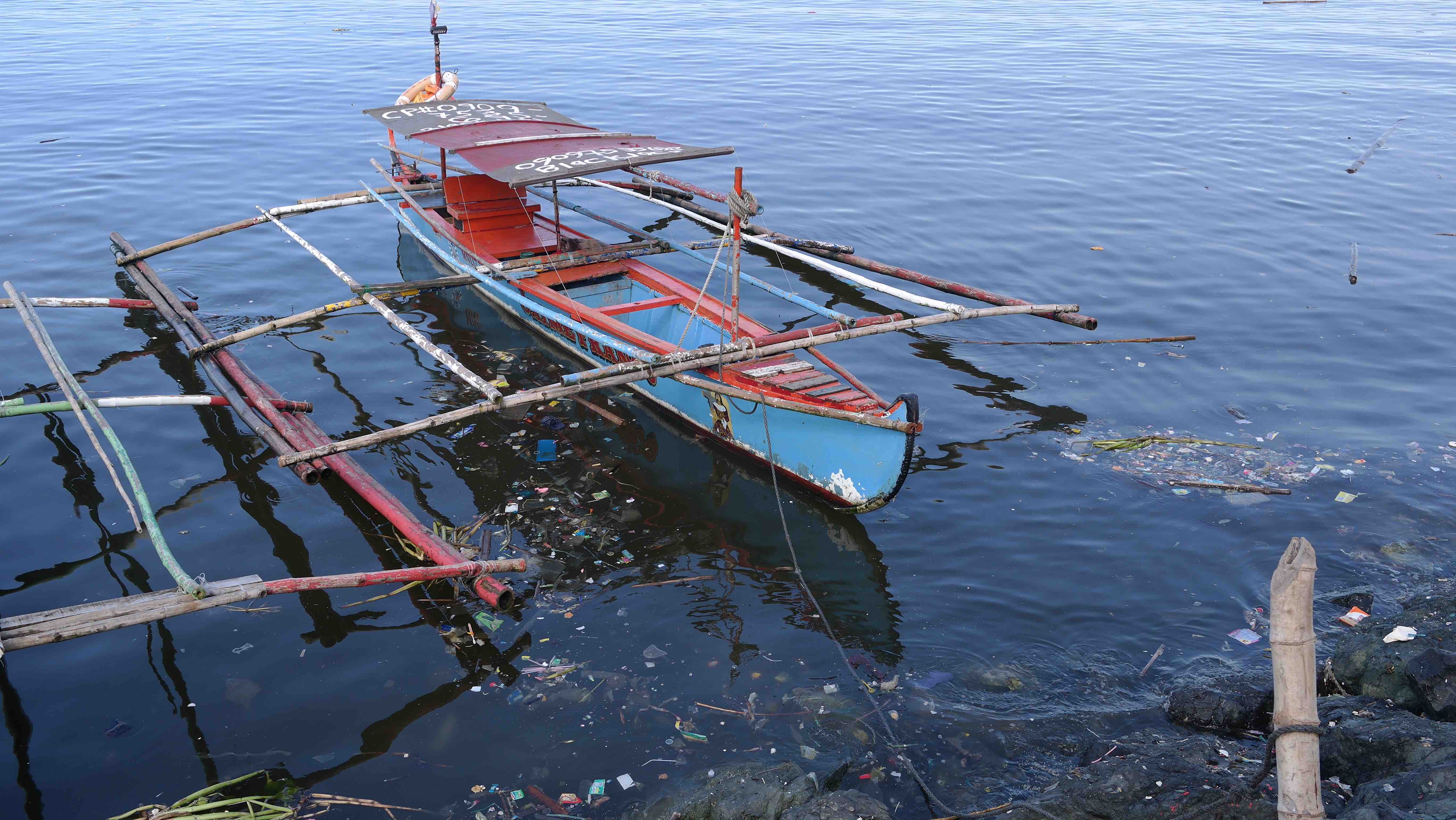
A United Nations Environment Program status report in June revealed that the Philippines is one of only five countries that produce about half of the world’s plastic waste that ends up in oceans. The country reportedly goes through 6,237,653 kilograms of plastic a day, with less than 20 percent being recycled or reused.
An informal yet thriving group of young environmentalists have tried to combat this by shifting to a more sustainable lifestyle: no plastic bags, bottles, or straws.
But this is proving a tough sell to the majority of Filipinos who, because of financial constraints, still buy nearly everything — from shampoo to sugar — in tiny sachets.
Bye bye, plastic
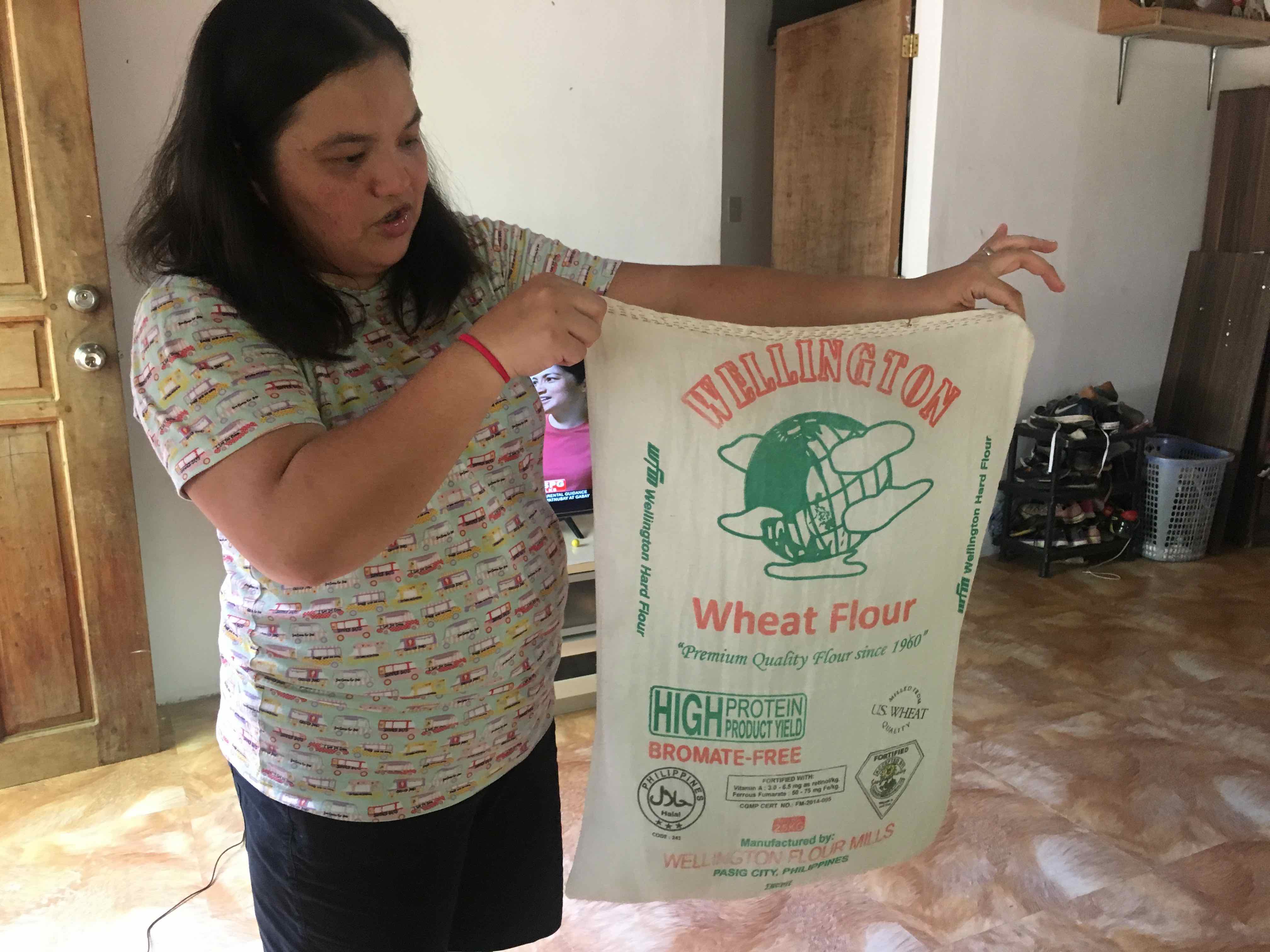
Gigi Clemente, 35, only began living sustainably last November, but her evangelical fervor for the lifestyle change suggests someone who’s been doing it for years.
The mother of three showed off her tools for zero-waste living when Coconuts recently visited her home in Santa Maria, Bulacan — about an hour and a half outside Manila.
She gave a tour of her sparsely furnished but homey bungalow, and talked easily for hours about plastic-free products.
In the kitchen, Clemente popped open a tote bag made from a flour sack. Inside were smaller bags of the same recycled fabric as well as empty ice cream tubs. She takes these with her on her Sunday trips to the market, using them instead of the plastic bags meat and vegetables are usually packaged in.
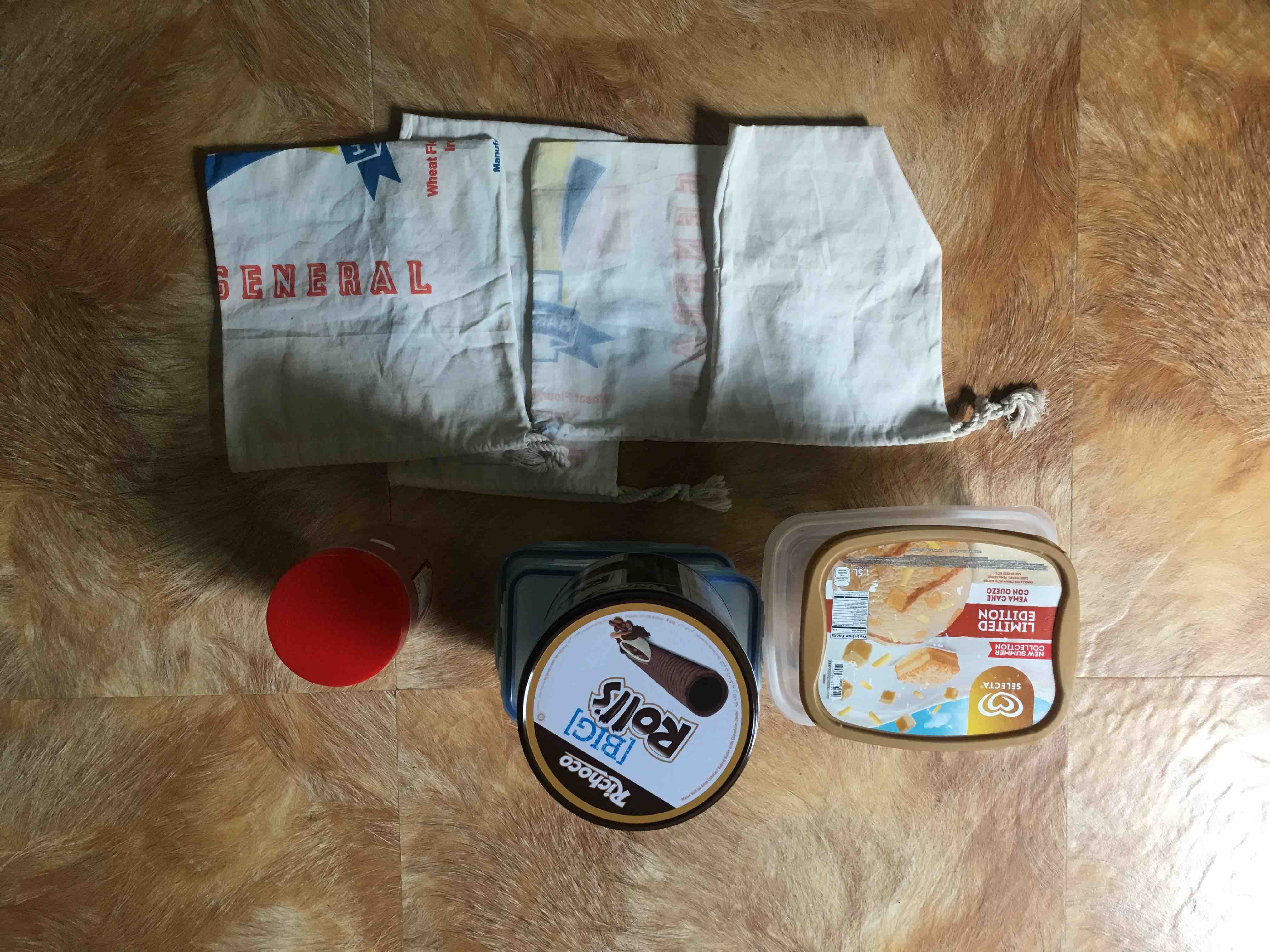
Shampoos in sachets are ubiquitous in Filipino bathrooms, but not Clemente’s. She and her three young children use shampoo bars. There were no toothpaste tubes either. Instead, they use tooth powder in glass jars.
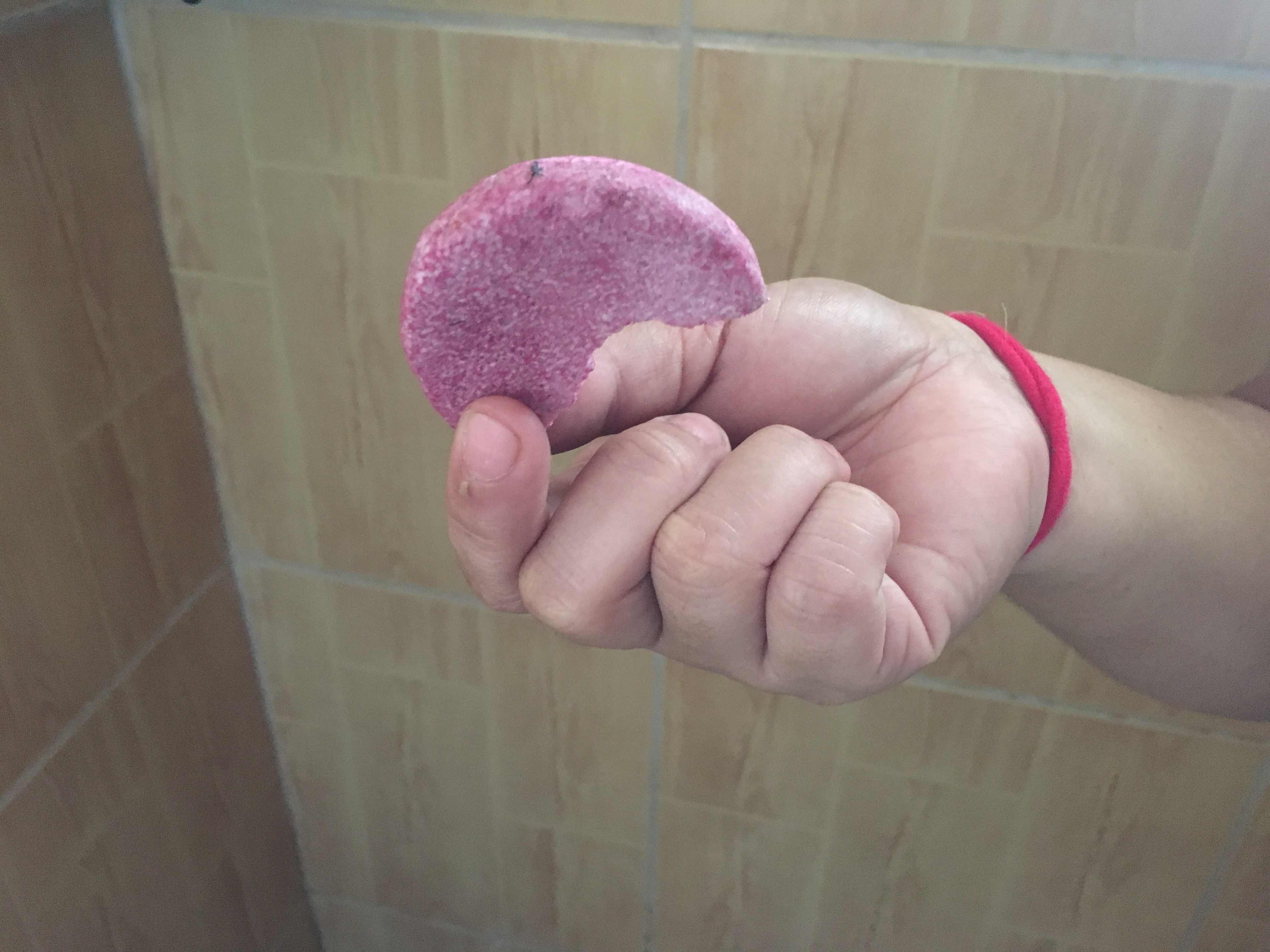
Her biggest challenge thus far, she says, has been shifting to reusable sanitary pads. At first she didn’t think she could do it. It’s a big change, and a potentially expensive one, too.
They go for about PHP150 (US$2.77) each online, and Clemente said she uses about four a day while menstruating, meaning she would need 20 every month.
“I said, it’s so expensive, and I’m not rich,” Clemente explained in Filipino.
So instead, she got creative and had a seamstress sew her a bunch of homemade pads using old bath towels. Clemente’s dream is for her 5-year-old daughter to never have to use disposable sanitary napkins.
“I want her to see in me that it’s possible to use reusable pads,” she said.
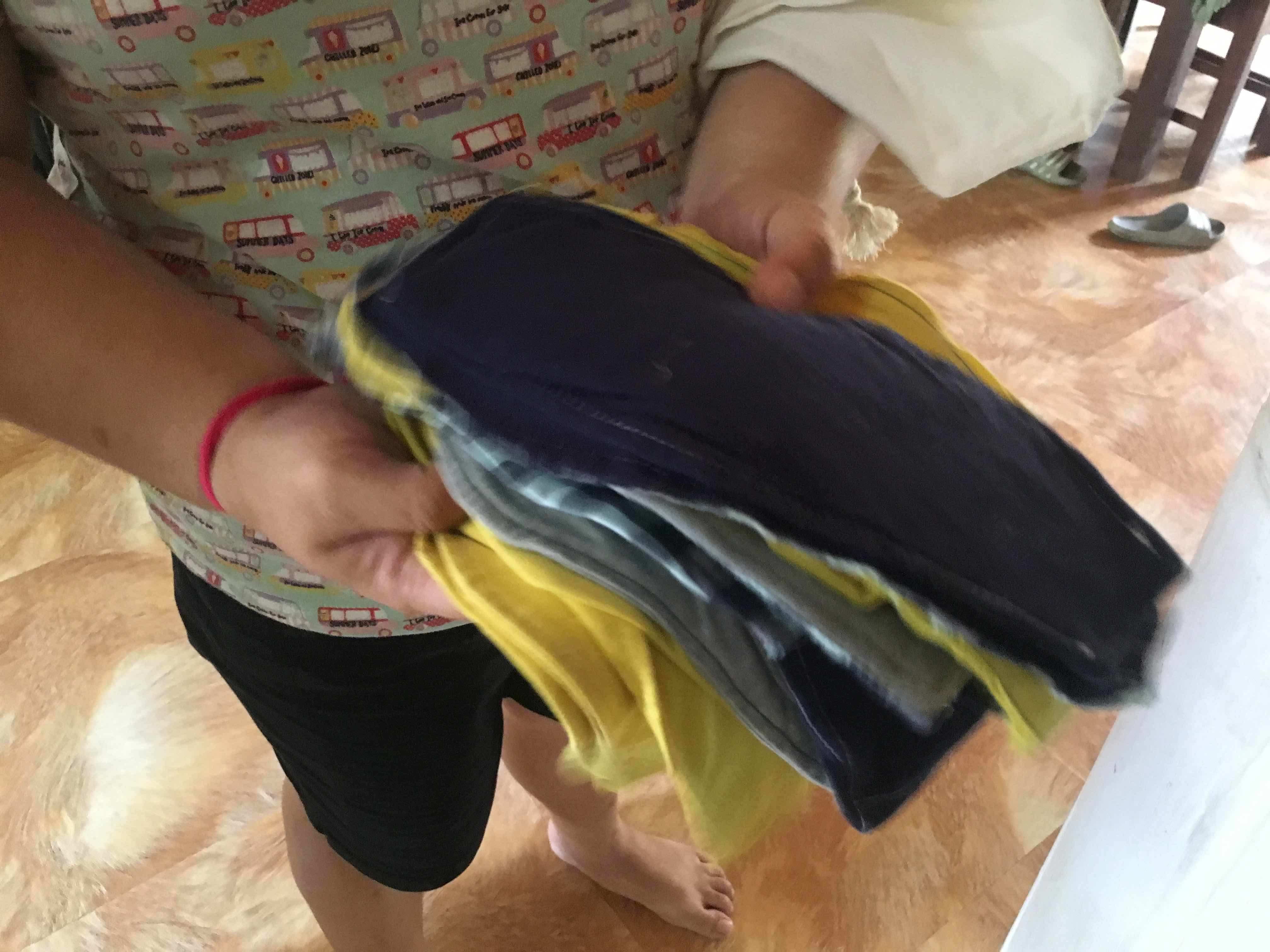
While it may seem like too much effort for some, to Clemente, it’s a simple way to help save the earth — and her hometown.
A Santa Maria resident her entire life, she recalled how the area never used to flood.
“My grandfather used to say that if it floods where we live, the entirety of Manila would be under water,” she said.
While that apocalyptic scene has yet to happen, it still came as a shock when she saw the river overflow its banks during typhoon Ondoy (aka Ketsana) in 2009.
The memory is fresh when she sarcastically explains her move to sustainable living to her husband: “One day when we have grandchildren, great-grandchildren, they might have to travel in boats.”
Clemente first began learning about sustainable living through YouTube videos and documentaries, eventually joining local Facebook groups like Buhay Zero-Waste (Zero-Waste Living).
Buhay Zero-Waste has nearly 30,000 members who regularly update each other about their sustainable journey. Some simply ask for tips like how to minimize plastic use when eating out, while others share videos of what excessive plastic use does to the environment.
In one recent post, a woman shared how she used old socks to make a snowman Christmas ornament.
Clemente was so inspired by the community that she started her own Facebook blog about her new lifestyle. She believes the growing eco-friendly trend among millennials can be chalked up in large part to the internet.
“We are more open-minded [than other generations]. And we love to read, we watch videos. And the platform of those who educate about zero-waste [living] is the internet. Now everyone has a smartphone, everyone has a computer, (the) internet, so it’s easy,” Clemente said.
But the lifestyle change has come with challenges.
“The most difficult adjustment was having to [constantly] think if something uses plastic or not,” she said.
“Sometimes, you feel alone, like when you go to the market, you seldom see other people with containers. Sometimes, they’d stare at you.”
She finds that rather than going into deep moral discussions about why plastic is bad, the best way to influence people is by explaining its practicality.
“At first I just told them, ‘oh, it’s easier to clean up this way.’”
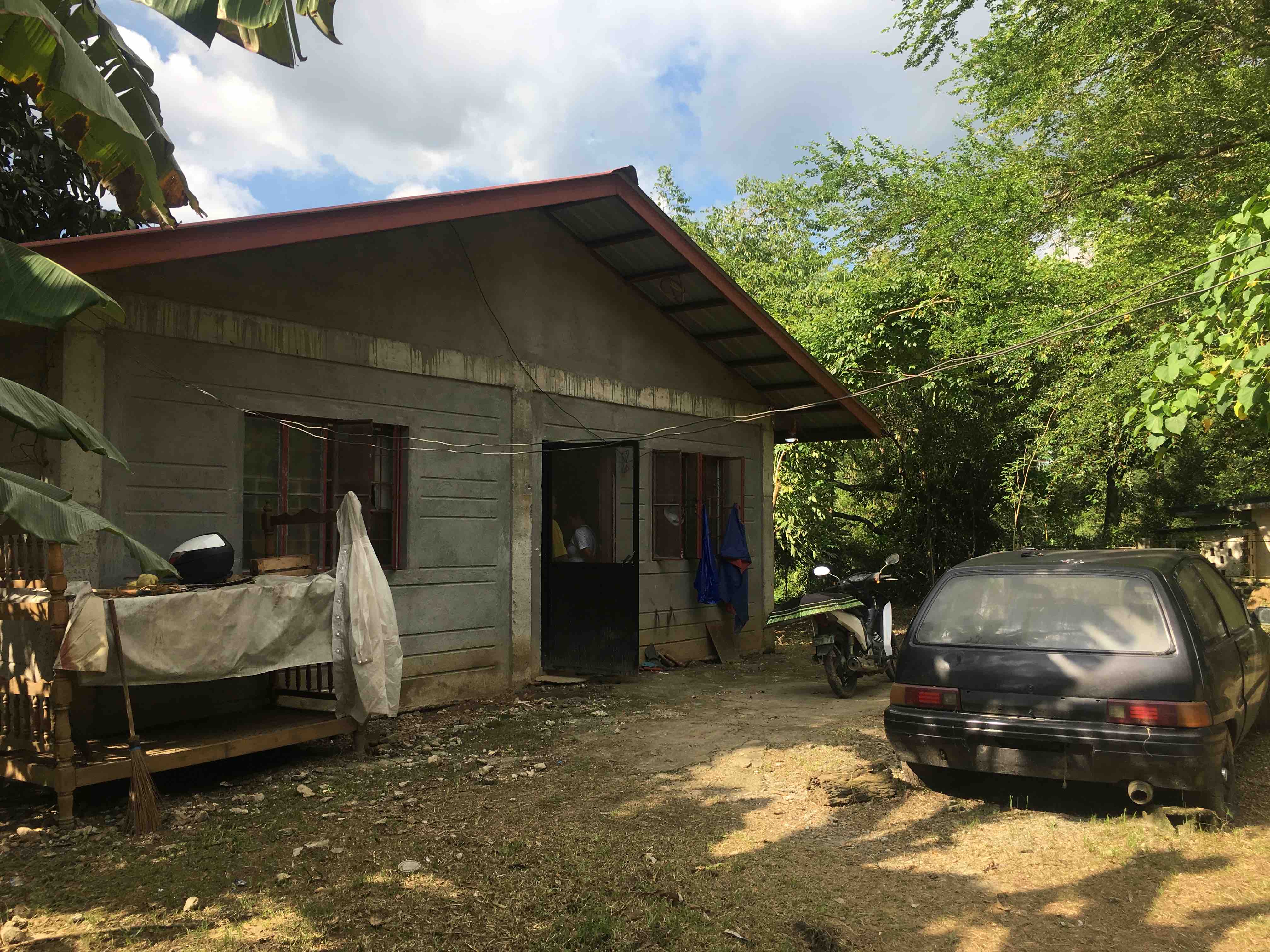
She encounters a lot of these teaching moments with friends, family, and colleagues. Once, the janitor at the courthouse where she works quipped that buying plastic-free products was only for the rich.
“I told her ‘that’s not true’ because as much as possible, I don’t buy anything.”
Clemente describes herself as an “ordinary employee.” She and her family’s home, while spacious and enough for a family of five, isn’t grand. But she makes it work.
She’s aware, though, that she is still more privileged than others.
“It now becomes a question of social class, because what the poor can afford are smaller portions, which are usually wrapped in plastic,” she said.
“You can’t blame people if they can’t go zero-waste because they’re limited by their means.”
Sachet-ing through life
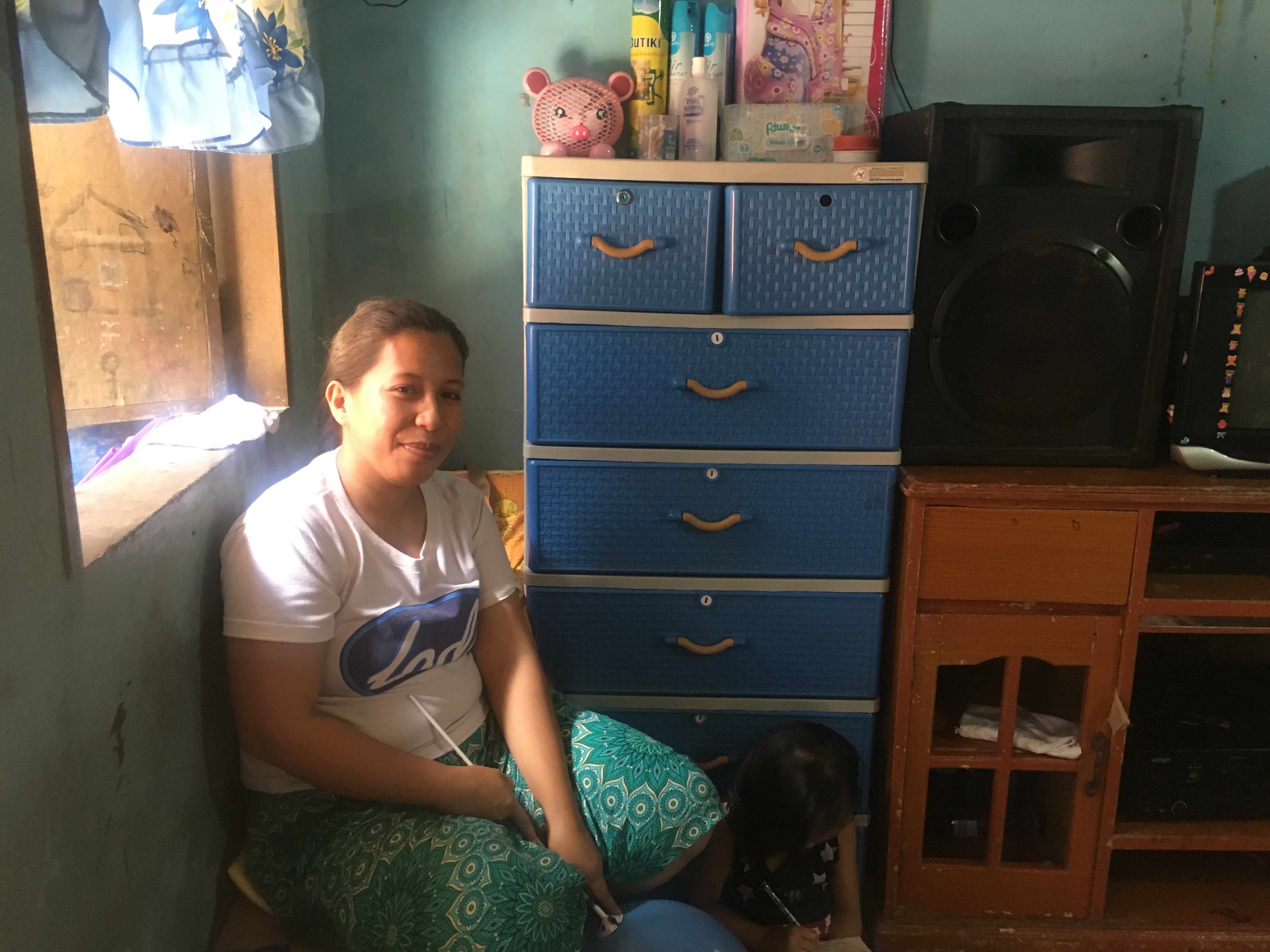
Those limits are felt on a daily basis by Solita Machica.
At 30 years old, she already has five children — the youngest just over a year old. They live in a bare-bones home with about 25 square meters of floor area in one of Marikina City’s shanty neighborhoods. Aside from her husband and children, Machica also takes care of her 68-year-old mother.
Unlike Clemente, Machica’s groceries are usually full of single-use plastics. She never buys shampoo in bottles, always in sachets. Her family goes through as many as 14 packets per week.
The same goes for cooking. Everything — from the seasoning, to the soy sauce, to the cooking oil — is packed in plastic bags good for only a couple of meals.
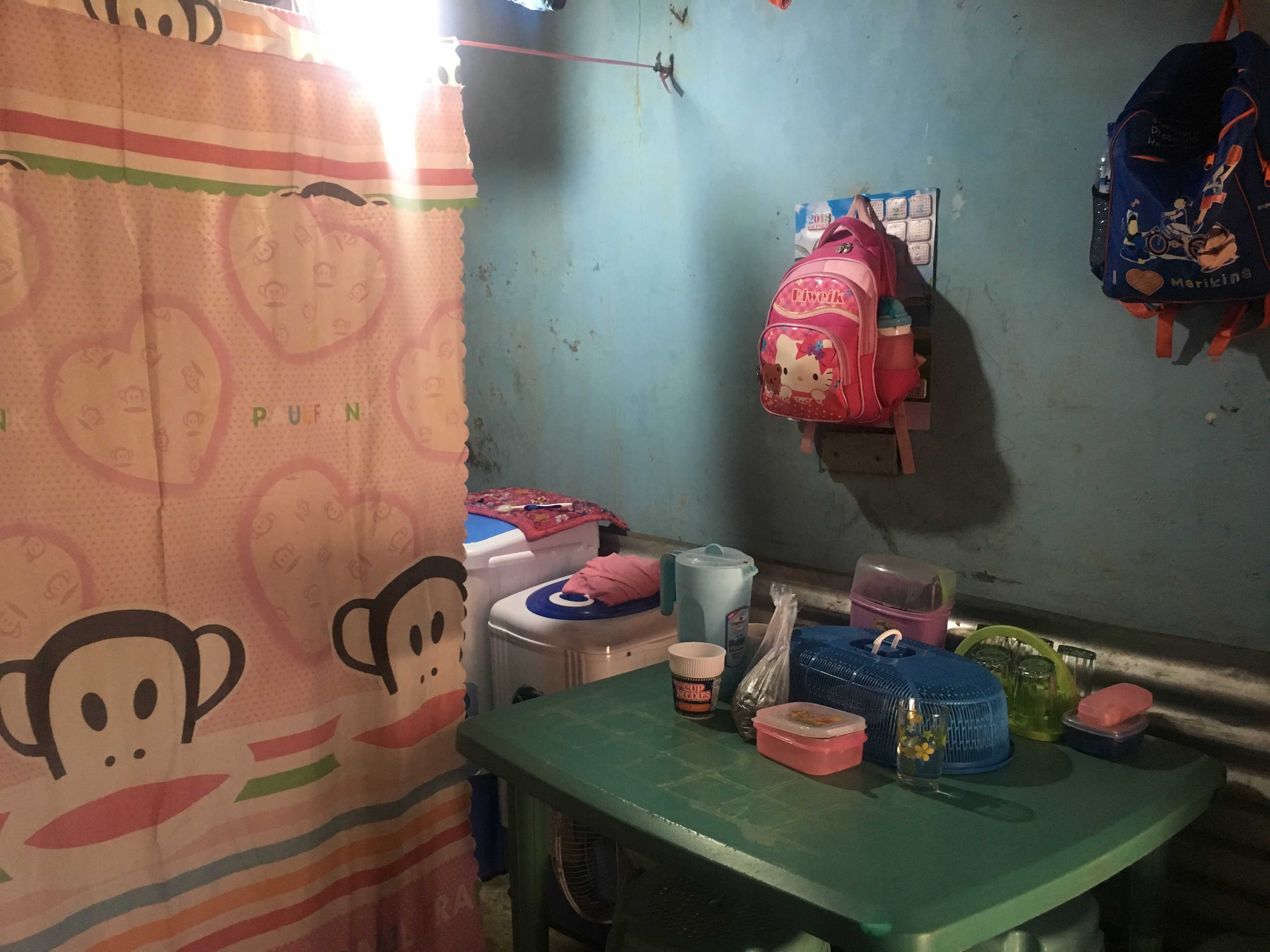
Machica knows that buying in bulk would be cheaper in the long run, but said it wasn’t a realistic option.
“We don’t have money,” she said, laughing.
“Our budget isn’t enough, because we have four kids studying … our daily expenses are high. PHP500 (US$9.21) isn’t enough for a day,” she said.
Machica doesn’t work, so she can stay at home to take care of the children. Her husband is a waiter at a Chinese restaurant and earns PHP14,000 (US$257.92) every month, far below the National Economic and Development Authority’s estimated PHP42,000 (US$773.77) monthly income needed for a family of five to survive.
This experience isn’t limited to their family. According to the latest data from the World Bank, 22 million Filipinos — more than a fifth of the country’s population — live below the poverty line.
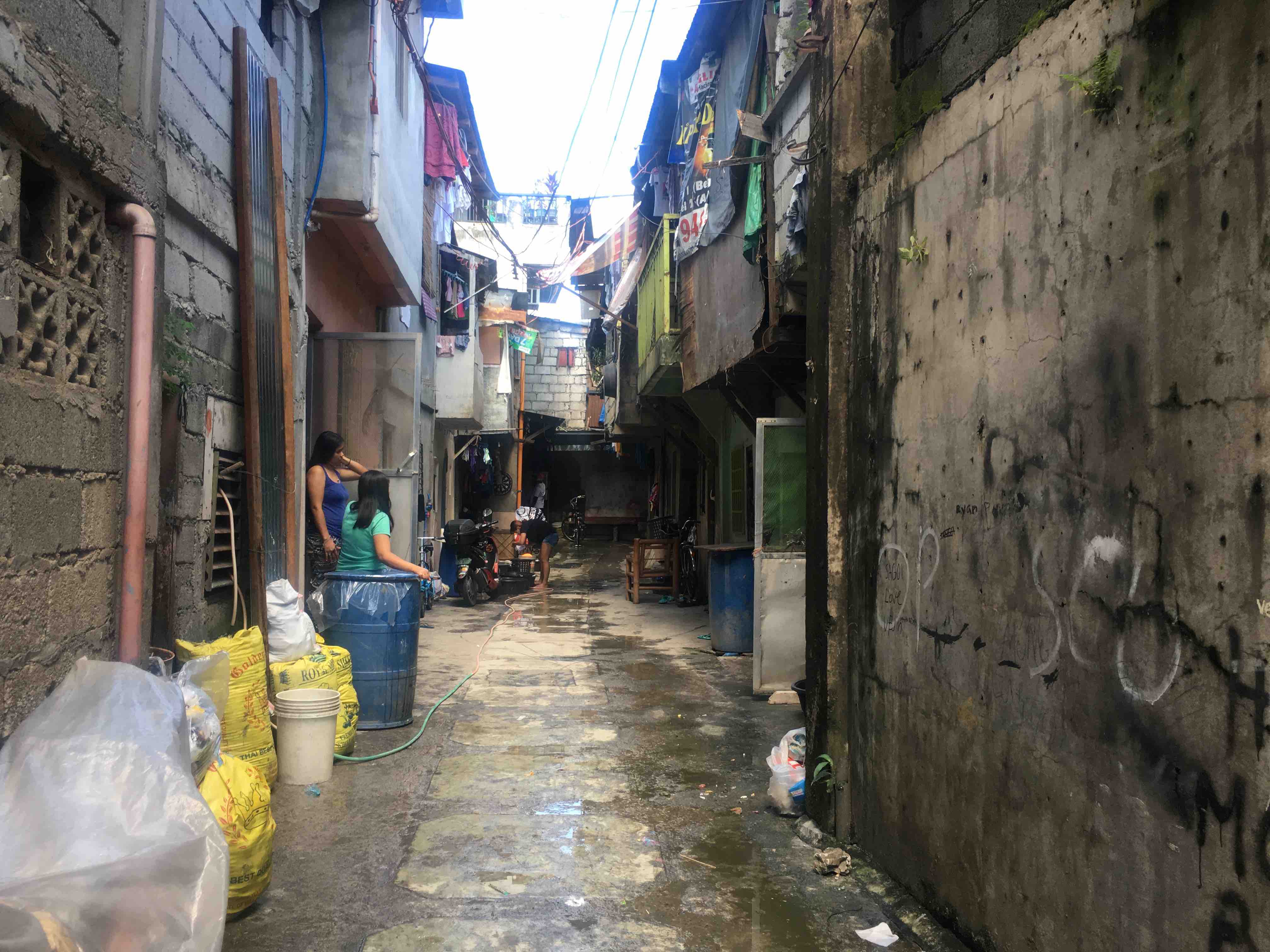
That goes a long way toward explaining why pantry staples like sugar are repacked in tiny disposable plastics and sold for PHP1 (US$.018) a pop.
And as the prices of staples get higher, packaging gets smaller.
Jocelyn Larona, 49 years old, has been running a sari-sari store (corner store) in the same Marikina City neighborhood for 20 years. Her shop is on the first floor of their home and doubles as a carinderia (food stall). Anything anyone one needs, she has.
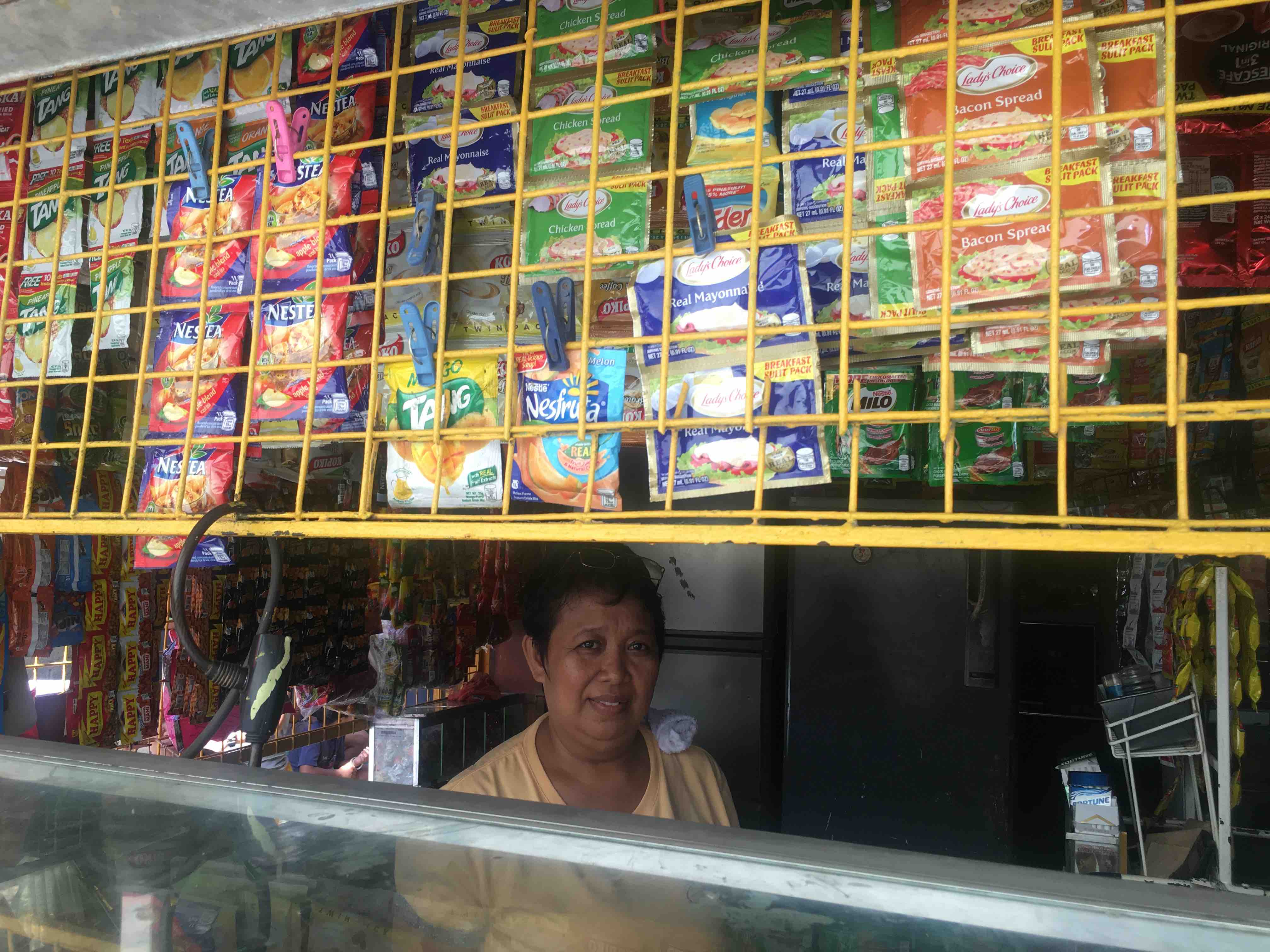
Hanging on a hook attached to the ceiling are a bunch of the PHP1 (US$.018) sugar packets, each containing about a tablespoon.
“I sell those because they’re fast moving,” she said in Filipino, sharing that she can go through hundreds of the disposable plastic packets in a week.
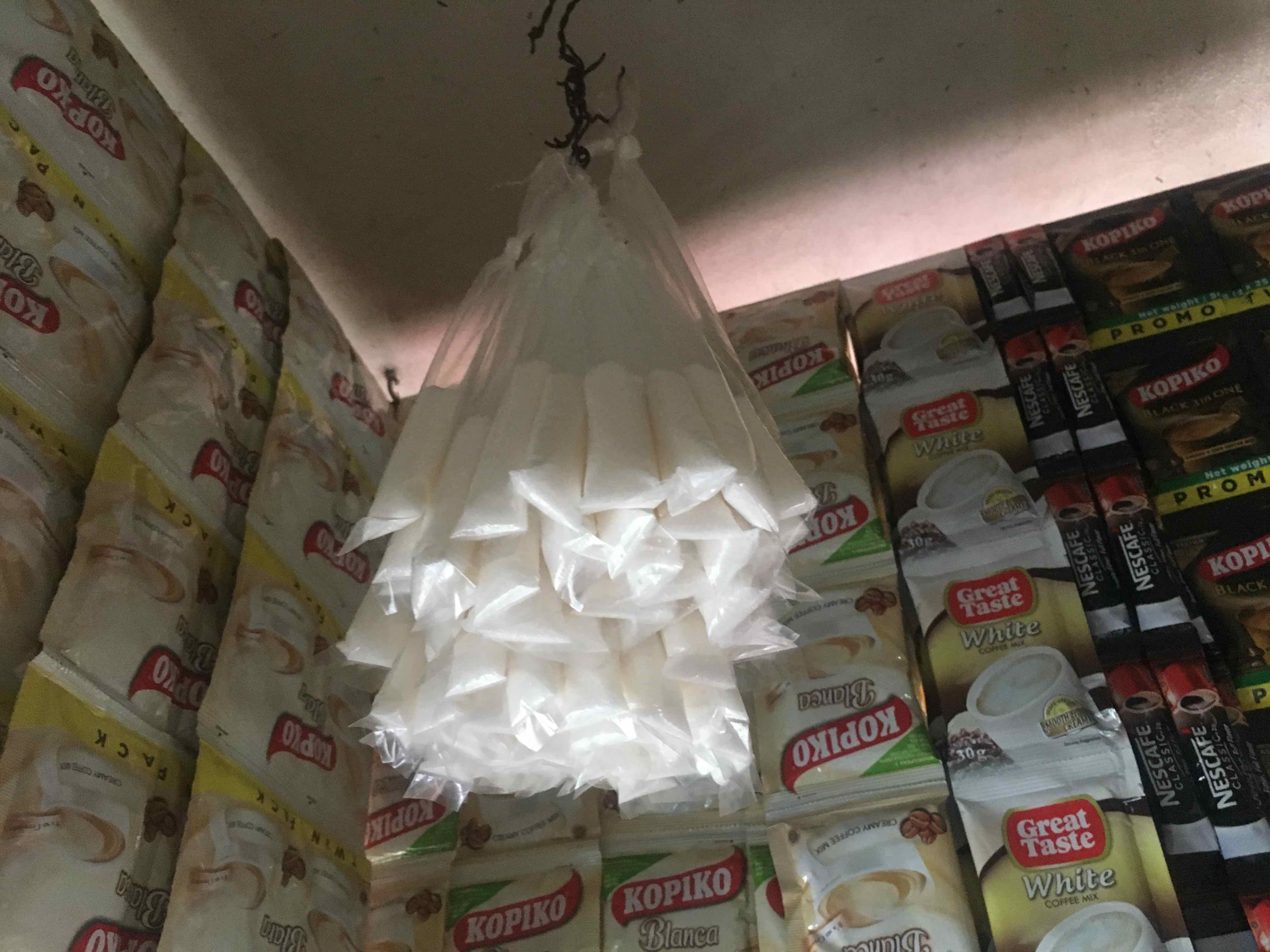
Larona shared that she hasn’t increased her price for sugar in a long time but was forced to divide them into smaller quantities as the bulk price she was paying rose. According to the Sugar Regulatory Administration, the retail price for a kilogram of refined sugar is now PHP64 (US$1.18), up 21 percent from a year ago.
It’s the same for the cooked meals she sells. Her daily menu includes champorado (chocolate rice porridge), sopas (macaroni soup), spaghetti, and different kinds of pancit (noodles). All are packed in thin plastic bags meant to be tossed out once the customer gets home.

Larona goes through about a thousand of these bags every week. She knows they’re bad for the environment and cause the floods that devastate their area every year when they block sewage pipes but insists she has no choice.
She offered a comparison. One paper bag container PHP4 (US$.07), as opposed to the 100 plastic bags she gets for PHP9 (US$.17). She sells one bag of pancit for PHP15 (US$.28), and says she can’t increase the price to make up for the cost of switching to paper containers because she’d risk losing customers.
“It’s too much for people; they won’t buy,” she said.
Cutting the source
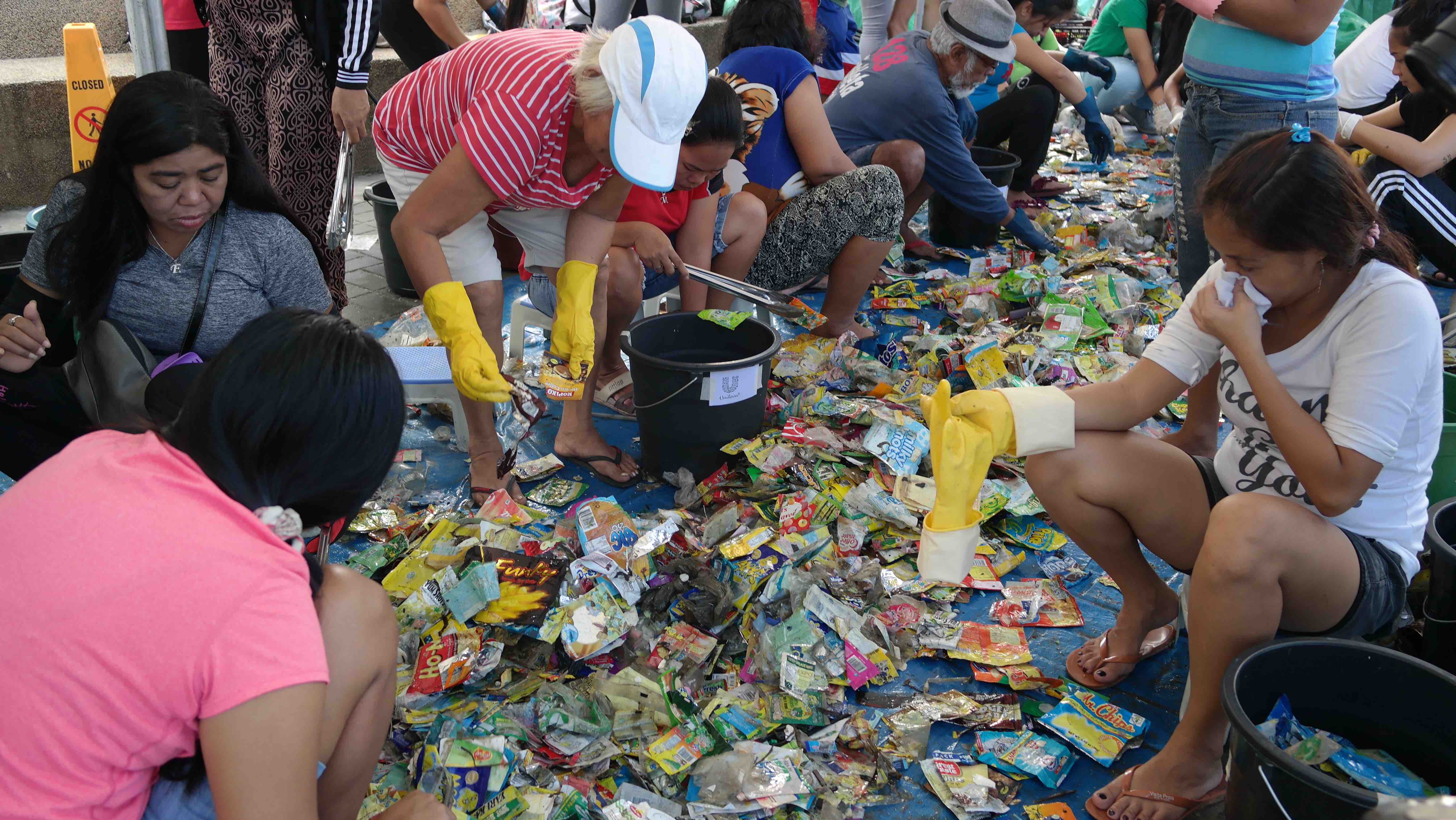
If it were up to global environmental organization Greenpeace, whether or not to use single-use plastics wouldn’t be a decision faced by either Clemente or Machica, they simply wouldn’t be available.
The day Coconuts visited Manila Bay, Greenpeace was there for the annual International Coastal Cleanup. Its campaigner, Abi Aguilar, stood on the promenade instructing volunteers about their ongoing project to audit the brands they find most frequently in the water.
Students, police, tourists, and even nuns came together for the clean-up, filling up nearly the entire length of the Baywalk. Aguilar said that many of their volunteers actually signed up through Facebook and were joining Greenpeace for the first time.
From 7-10am that day, Greenpeace collected 5,820 unique pieces of single-use plastic. Tagged as the worst offender that day was local company JBC, known for its small packs of peanut snacks.
The organization is aware that these results are not definitive — last year, it was Nestlé that topped the list — but Greenpeace says it’s a practical way to illustrate a real problem.
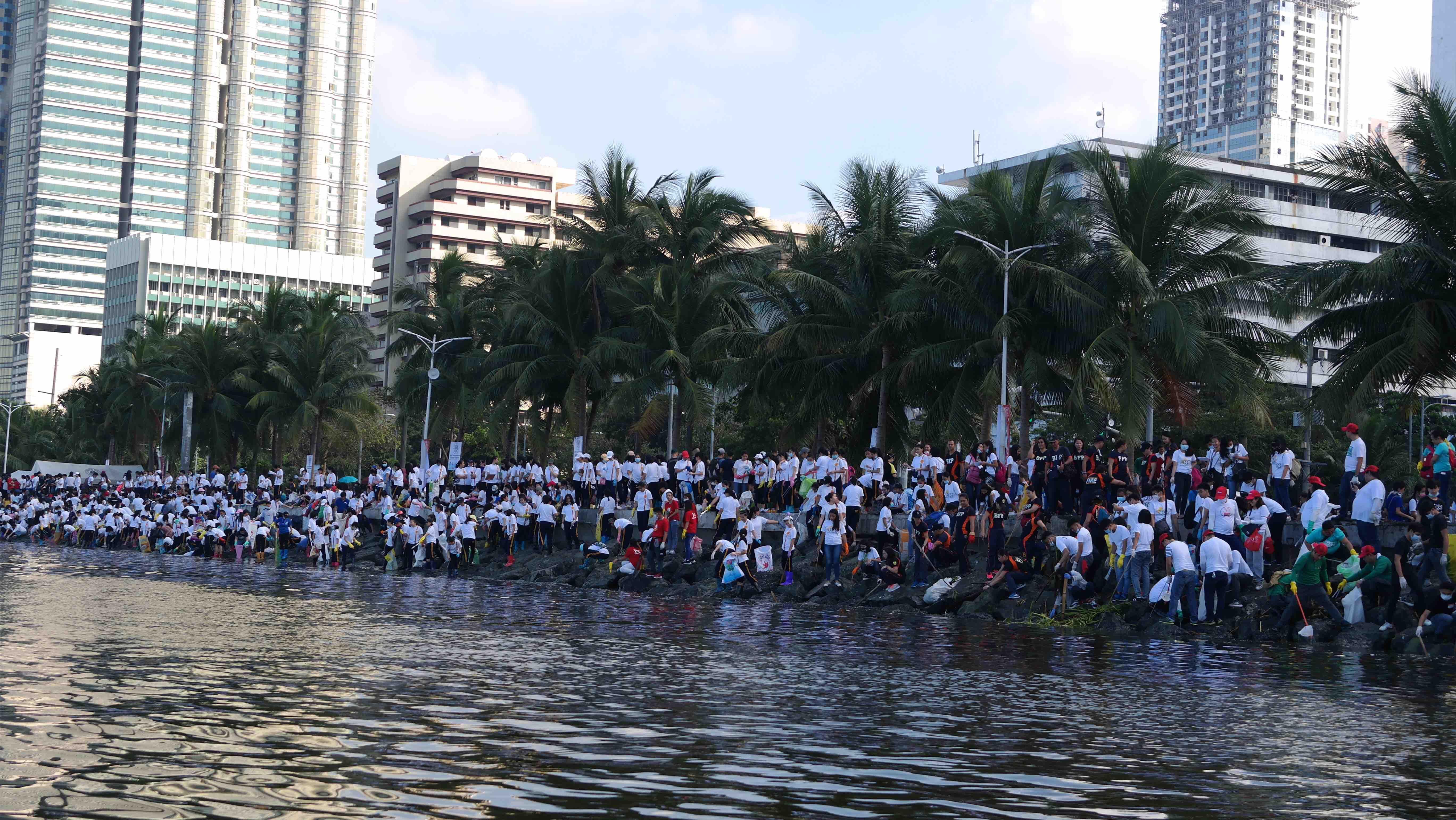
“This is only a snapshot. What we’re doing here is for this particular case in time, at this particular moment, for these particular hours … this is what we got,” said Sonny Batungbacal, regional oceans research coordinator for Greenpeace Southeast Asia.
Their goal is to hold corporations accountable for the country’s pollution and highlight their responsibility to help come up with solutions.
“I’d say the government has a main responsibility for it, individuals have a very big responsibility, too, but the missing piece in all this … are the corporations,” Aguilar said.
She said that while it’s easy to say individuals are undisciplined or that the government is inefficient, corporations are rarely held accountable for continuously promoting and producing single-use plastics.
“[W]hen you go to the supermarket, when you see the products, even if you want to buy and even if you have the capacity to buy in bulk, you can’t find many options,” she said.
In the Philippines, it’s not uncommon to even find larger-size shampoo bottles bundled with sachets of shampoo and conditioner, so even those trying to avoid them often end up with single-use plastics.
“Sachets always remain in the environment because they have zero to low value. That’s what makes them really problematic, because they just get left out there,” Aguilar said.
Plastic products are meant to be segregated and recycled, as mandated by the Ecological Solid Waste Management Act, but like so many other Philippine laws, implementation is uneven and highly dependent on the initiatives of local government units.
In June, a group of senators expressed vague support for a ban on single-use plastics, but things have moved at a snail’s pace and, so far, no such law is anywhere near being enacted.
Aguilar thinks it will be a tough one to pass. “A lot of business interests will be hit by this, so it’s also highly political,” she said.
An indication that, at least in the near future, single-use plastics will remain ubiquitous on supermarket shelves and inside the homes of struggling families like the Machicas.
